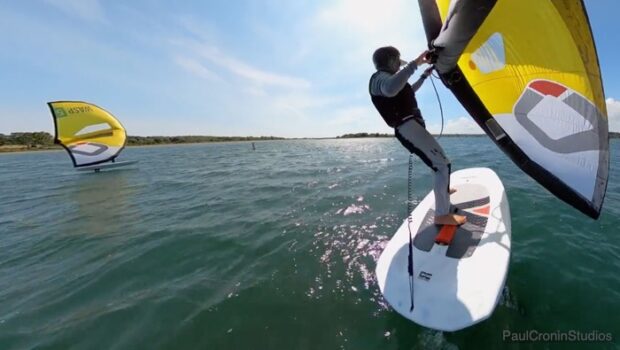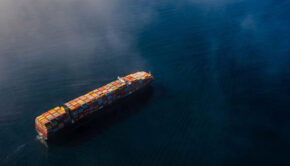Wingfoiling rescue lessons: Safety first
Published on August 17th, 2023
By Carol Newman Cronin
As you know all too well by now, Paul and I have been wingfoiling a lot this summer. A few weeks ago we had our first breakdown/rescue, and I’d like to pass along a few key hindsight lessons.
Most of my wingfoiling has been inside what we call “the playpen,” a very sheltered area in the lee of a long beach. The water is flat, and though the prevailing breeze is offshore it would be easy to paddle or walk home if something broke or the wind completely died. But now that the water is summer-warm and I can reliably foil jibe, I’ve been venturing out to play in open water whenever time and tide allow.
This particular day was absolutely perfect, right up until it wasn’t: a steady seabreeze against outgoing ebb had kicked up some very playful junior varsity waves between the launching area and Dutch Island. I was into my second hour of fun, heading for the lighthouse and already thinking about the next wave-dancing jibe, singing to myself (ironically in hindsight), “Don’t worry, about a thing…” when I heard a very loud POP—and the wing exploded. What had been an air-filled “sail” was now useless flotsam.
I always wear a lifejacket (and helmet) and my foil board floats my weight, so after moving wrist leash to ankle I climbed back onboard and started paddling, wing dragging behind me. I’d done that plenty of times to get back to the playpen beach, but what I didn’t realize was that the ruptured wing was slowly filling up with water. What I DID realize was that despite my best paddling efforts, the board, foils, wing, and I were all slowly but steadily being swept out to sea by the ebb.
I tried swimming the board instead; similar speed. Holding range, maybe? Definitely not getting any closer to shore.
Paul was circling around, providing both moral support and a more visible reference for a couple of passing powerboats—none of whom realized there was anything wrong. He suggested I pull the wing up onto the board, and that was definitely better but also an obstacle to paddling (the center strut was still inflated). I dropped back into the water again, because all I could focus on was to “keep swimming.”
“You’re making progress,” Paul said, encouragingly. (The GPS track proves otherwise.) “Good thing you like to swim!”
After a few more minutes of effort, it was clear: I was not going to get back to shore under my own steam. So, after a short discussion, Paul came alongside close enough for me to grab his board leash. Instantly our speed doubled—even with me dragging in the water. – Full story








 We’ll keep your information safe.
We’ll keep your information safe.